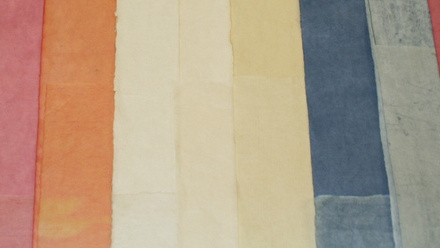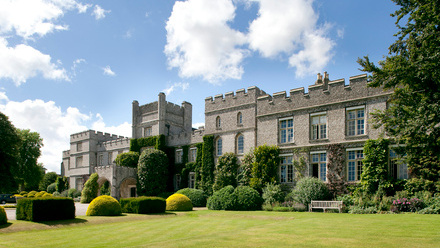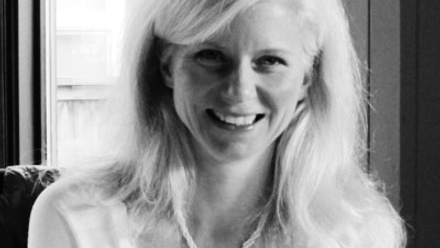Print rooms were a popular form of interior decoration in historic properties in England and Ireland from the 1750s to 1820s. Surrounded by paper borders and other decorative elements, selected prints were affixed directly to walls showcasing popular themes of the day.
The earliest mention in England of decorating rooms with prints was in the form of a set of instructions from Hannah Wooley in 1674. She recommends to “buy your Prints only Black and White, of sorts what are good, and cut them very exactly with a small pair of Cissers from the paper,” (p. 70). In 1726, Parisian Mademoiselle Aïssé wrote of a “new passion for cutting up coloured engravings,” (Jourdain, 1948, p. 524; Lambert, 1987, p. 183) which were pasted to sheets of pasteboard, varnished, and made into wall hangings and screens. In Ireland, Mrs Delaney, who made her own print room at Delville House c1751, “described how she and other guests whiled away many pleasurable hours ‘cutting up frames for prints’ on a wet day spent at Lucan House, Co. Down, in 1750,” (Longfield, 1970, p. 569).
Print rooms were commonly designed in dressing rooms, bedrooms, closets, small dining rooms, billiard rooms, corridors and even staircases, and the subject matter of the prints displayed varied from print room to print room. In general, there were no strong, singular themes and there was little standardisation or uniformity regarding style. Some had more decorative elements than others, in the form of floral swags, bows, ribbons, chains, urns, and festoons, and the paper frames themselves provided the illusion of the prints being hung from the walls.
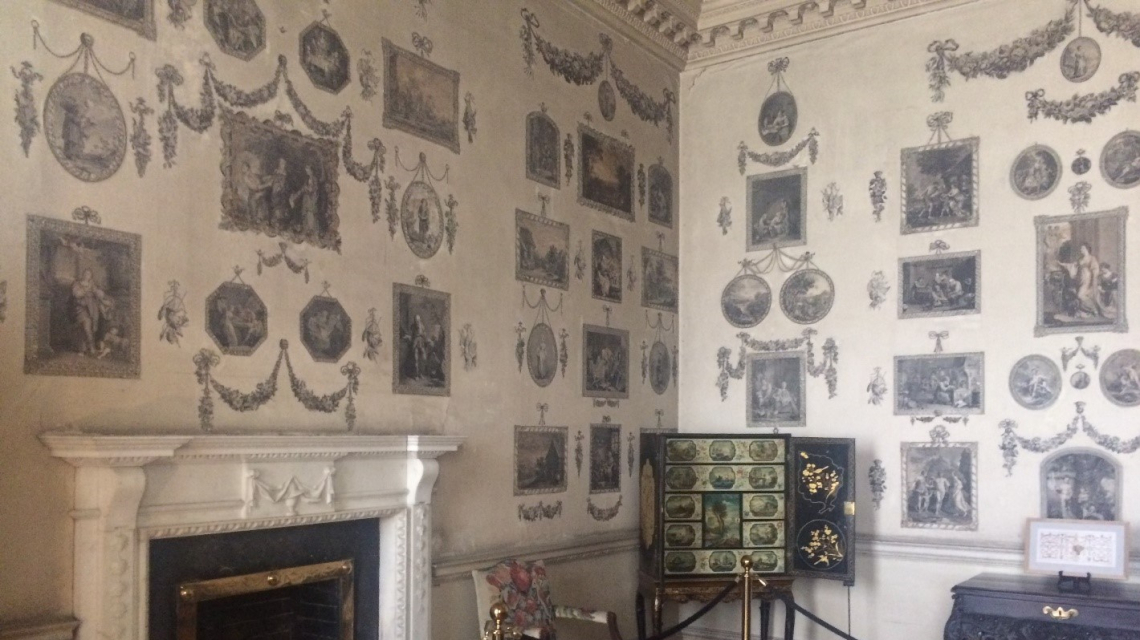
The print room at Castletown House created by Lady Louisa Connolly, completed in 1769. The prints include Roman mythological themes, an Italian landscape by Vivares after Lorrain, a print of Louisa’s sister Lady Sarah Bunbury and of the actor David Garrick, providing a snapshot of taste and fashions of the time.
The short-lived trend has 12 surviving examples (Rokeby Park, Castletown, The Vyne, Stratfield Saye, Uppark, Petworth, Woodhall Park, Heveningham Hall, Blickling Hall, Queen Charlotte’s Cottage, Calke Abbey, and Ston Easton Park) whether that be with the original prints or later replacements due to extensive deterioration, and they provide intriguing case studies for the conservation issues involved.
During the first two weeks of July, I went on a tour around England and Ireland to visit six of the surviving print rooms: Rokeby Park, Castletown, The Vyne, Uppark, Woodhall Park, and Blickling Hall. This tour was undertaken as part of my dissertation research at Northumbria University. My dissertation is titled: “Eighteenth-century print rooms – issues with adhering prints directly to walls and identifying best practice for their conservation.”
The aim of this tour was for me to see these print rooms in person, to talk to the staff in charge of the safeguarding of these rooms and find out as much information about them as I could. Since my dissertation is focused on the conservation of print rooms, it was hugely important I visit them in person to view the prints, the paper borders, decorative elements, and the wallpaper up close to assess their condition and composition.
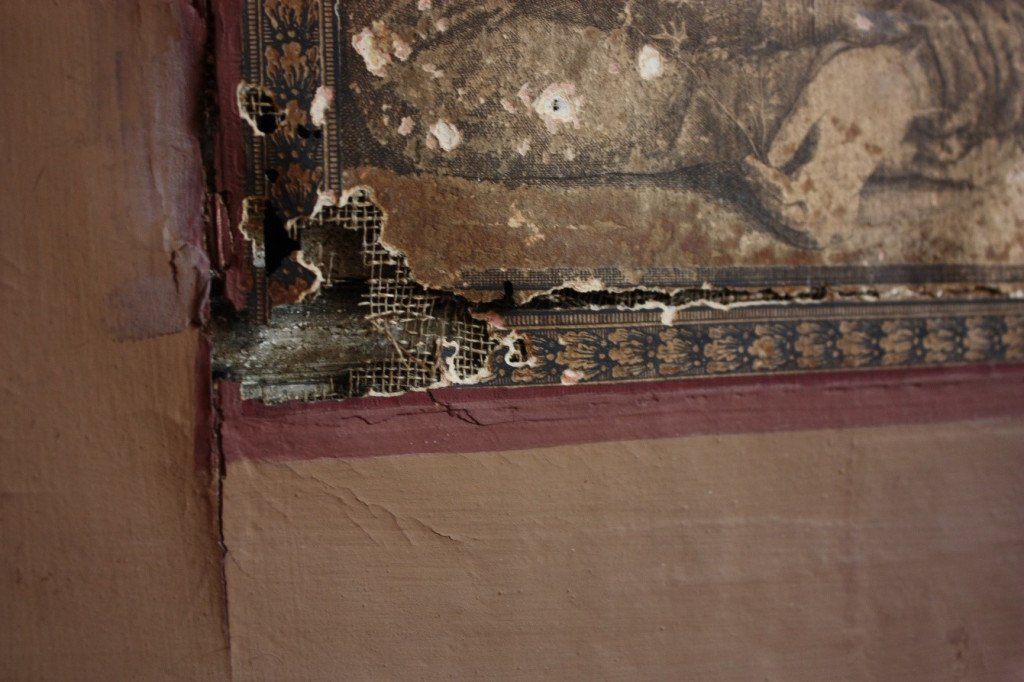
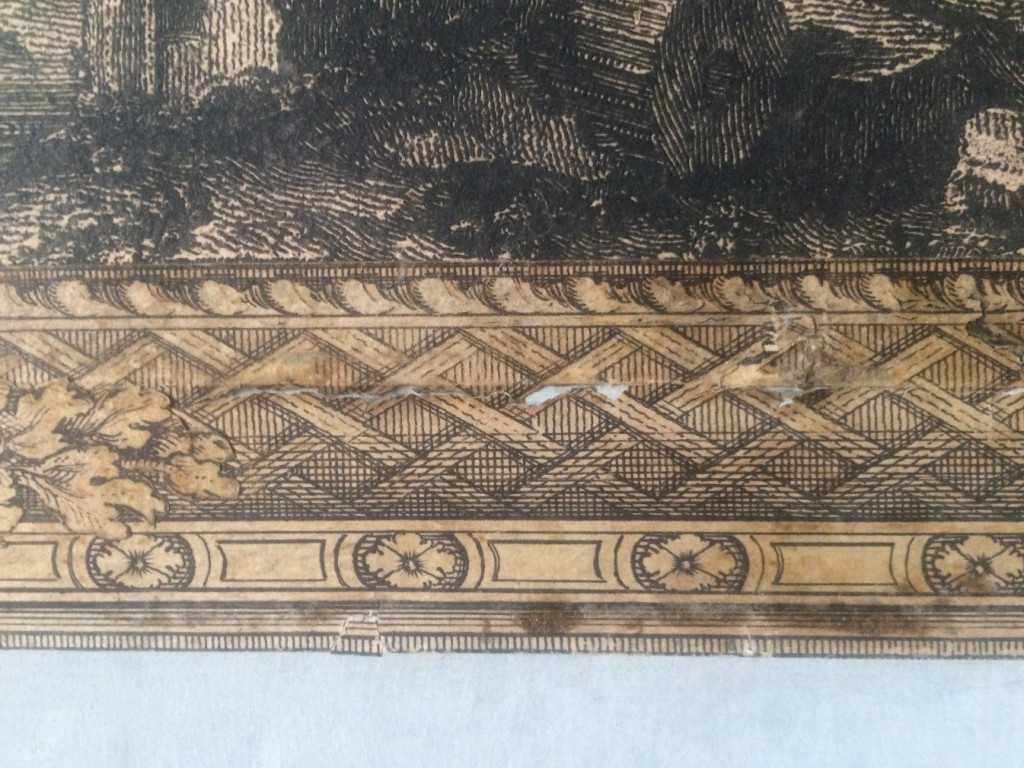
At the beginning of August, I went to visit historic wallpaper conservator Allyson McDermott in Cumbria. I learned so much from her about how print rooms were produced, with a focus on all the different layers, from lining papers to canvas, that make up the walls of print rooms. Allyson gave me invaluable insight into her process of approaching the conservation of print rooms, which has been extremely beneficial for my research. She also helped me understand how the walls were prepared and be able to identify overlaps of the paper as show in the next photograph.
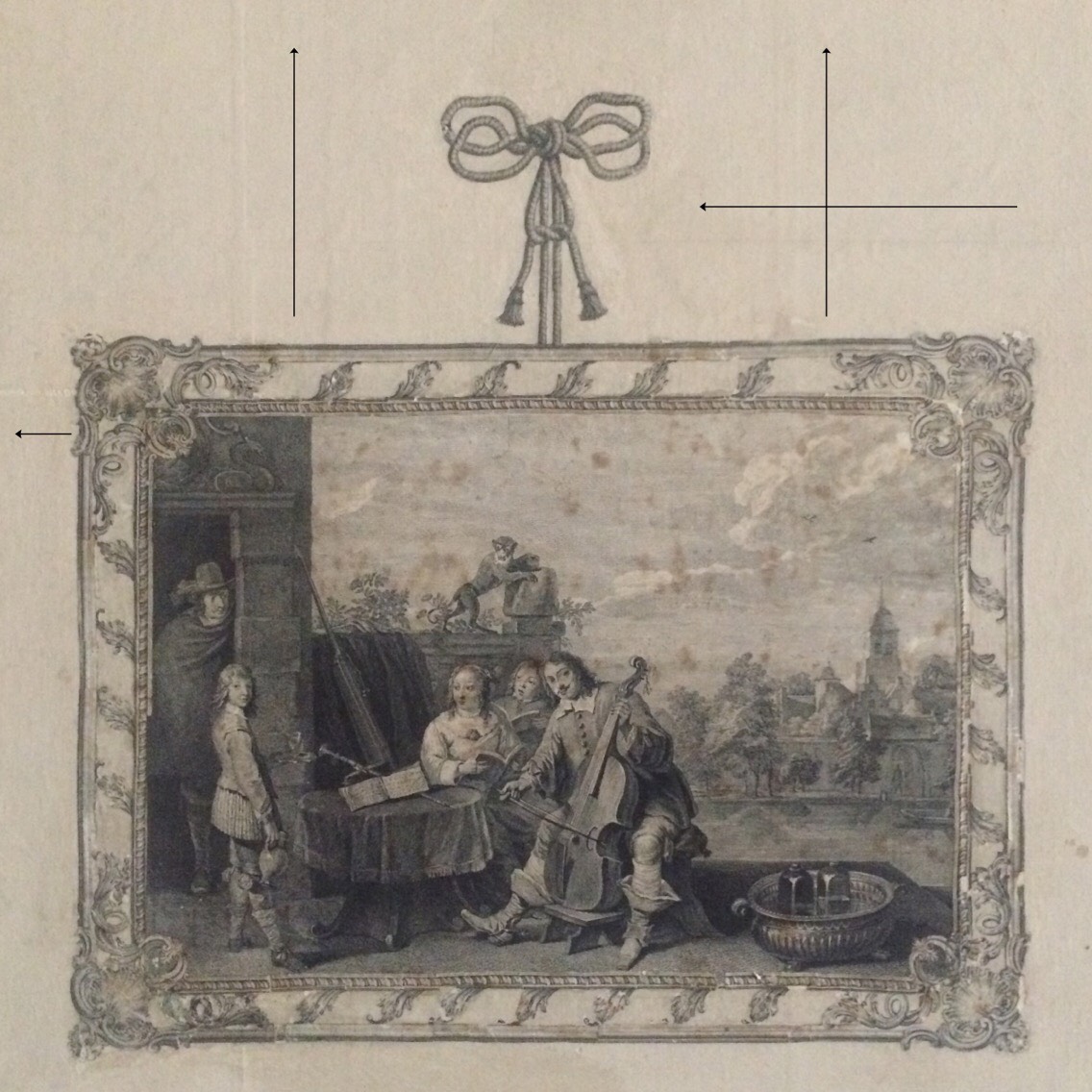
I used the Icon Book and Paper Group bursary to pay for public transport to some of these print rooms and I am extremely grateful for this financial support. It was an amazing experience and will make all the difference to my research, for only so much can be gleaned from articles and photographs.
References and recommended reading
Archer, C. (1989) ‘Festoons of flowers for fitting up print rooms’, Apollo: The International Magazine of the Arts, 334, December, pp. 386-91.
Banham, J. (1994) ‘Room to view’, Antique Collector, 65(3), pp. 66-71.
Calloway, S. (1991) ‘Engraving schemes’, Country Life, 185(16), pp. 102-5.
Fitzgerald, J. (2005) ‘The print room in Britain and Ireland 1750-1830’, The Quarterly: The Quarterly, LV, pp. 23-31.
Guinness, D. (1978) ‘The revival of the print room’, Antique Collector, 6(78), pp. 88-91.
Jourdain, M. (1948) ‘Print rooms’, Country Life, 104(2695), pp. 524-5.
Lambert, S. (1987) The image multiplied: five centuries of printed reproductions of paintings and drawings. London: Victoria and Albert Museum.
Longfield, A.K. (1970) ‘Print rooms,’ Journal of the Co. Kildare Archaeology Society, 14(5), pp. 568-75.
Russell, F. (1977) ‘Microcosm of 18th century taste: the engravings room at Woodhall Park’, Country Life, 162(4188), pp. 924-926.
Tillyard, S. (1994) Aristocrats: Caroline, Emily, Louisa and Sarah Lennox 1740-1832. London: Chatto & Windus.
Wooley, H. (1674) A supplement to the queen-like closet, or, a little of everything: presented to all ingenious ladies and gentlewomen. London: Printed by T.R. for Richard Lownds.
Anna O’Regan recently completed her Masters in paper conservation at Northumbria University and is currently seeking employment whilst volunteering at the Edinburgh University Library’s CRC. She won a B&PG Professional Development Bursary in April 2018.

